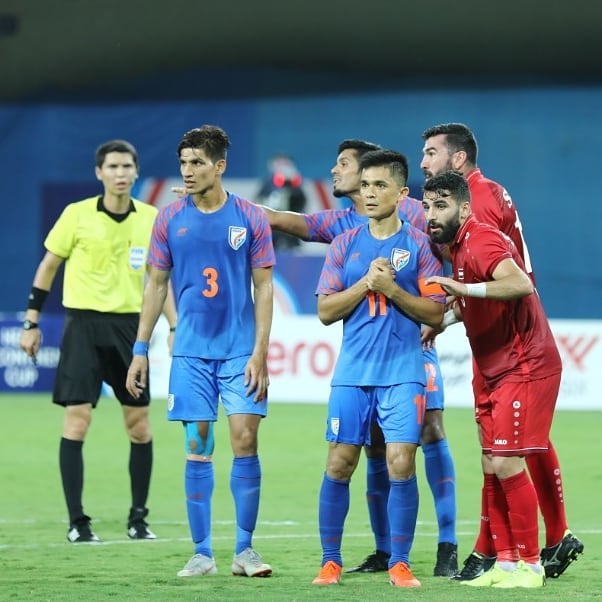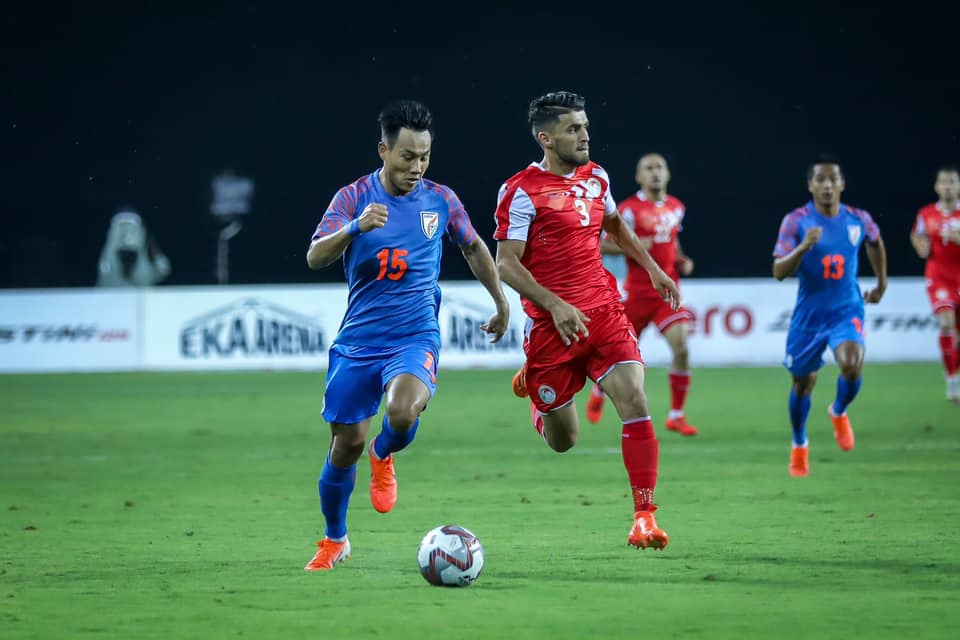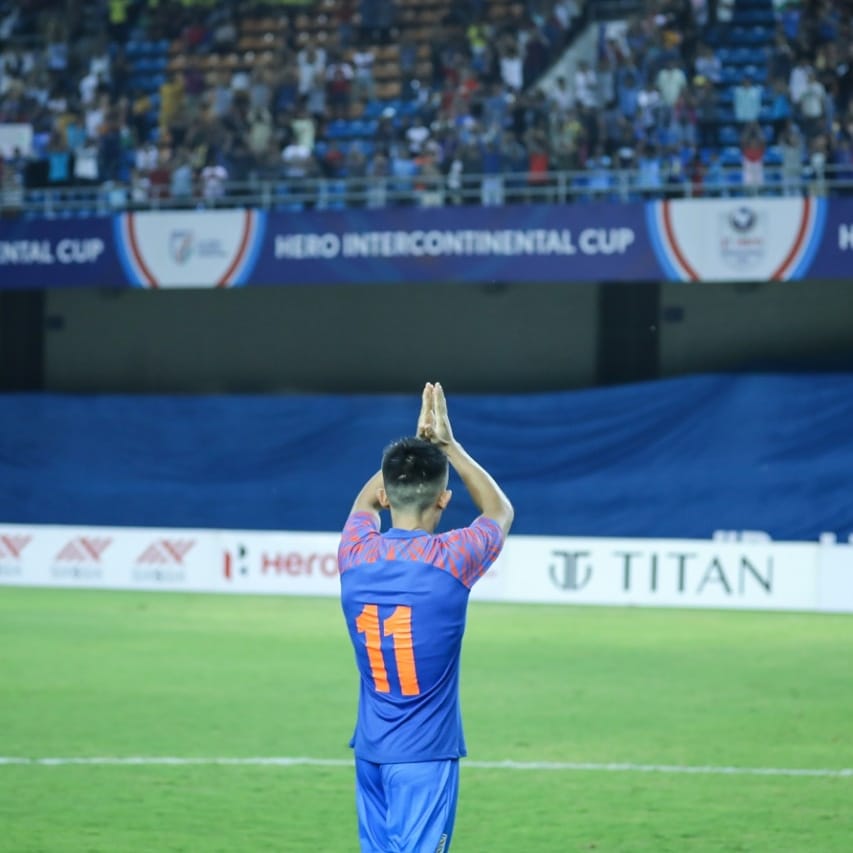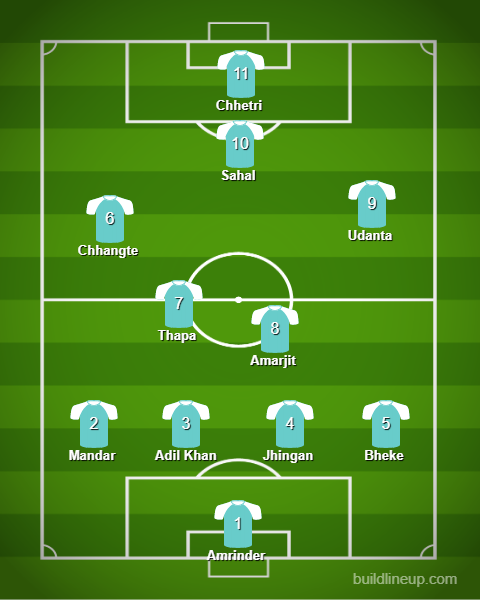Begin typing your search above and press return to search.
Featured
A reality check for Indian football team and the way forward

Reality can often be a cruel mistress, and most Indian football fans are coming to term with it right about now. Over the course of the last two weeks, they have seen their team humbled by lesser countries (at least as per FIFA ELO rankings) in a home tournament while their country’s Football Association is immersed in a never-ending controversy regarding the future of the national leagues. Having conceded ten goals in three games and scoring five, one could say the performances are more of a mixed-bag nature, but that could not be any further from the truth. Appointed in May, former Croatian international Igor Stimac took over the managerial reins from Stephen Constantine and was immediately scheduled to play back-to-back international tournaments in June and July. With hardly any preparation and with little or no training camps, Stimac has so far endured one win(against Thailand), three losses( to Curacao, Tajikistan and DPR Korea) and one draw(against Syria). The results against Curacao and Thailand were procured at the King’s Cup in Thailand in June, while the rest were from the recently-concluded Intercontinental Cup in Ahmedabad.  India against Syria at the Intercontinental Cup (Photo: Facebook) Stimac, is of course, much in tunes with the modern demands of the game and thus, focusing on building from the back and recycling possession in the middle of the park. As such, the midfield is the most crucial cog in his piece and commendable performances from the starlets like Sahal Abdul Samad, Anirudh Thapa, Amarjit Singh Kiyam and Raynier Fernandes will no doubt please him immensely. He should, and he most likely will be building the spine of the new Indian team based around these exciting prospects.
India against Syria at the Intercontinental Cup (Photo: Facebook) Stimac, is of course, much in tunes with the modern demands of the game and thus, focusing on building from the back and recycling possession in the middle of the park. As such, the midfield is the most crucial cog in his piece and commendable performances from the starlets like Sahal Abdul Samad, Anirudh Thapa, Amarjit Singh Kiyam and Raynier Fernandes will no doubt please him immensely. He should, and he most likely will be building the spine of the new Indian team based around these exciting prospects.  Udanta in action (Photo: Facebook) The apparent shortage of quality in India’s backline comes from the lack of game time these players receive in the domestic season. Out of all the defenders mentioned, only Jhinghan had played over 1,000 minutes in the Indian Super League last season. The Blue Tigers found it hard to cope with the zonal pressing and quick passing employed by both Tajikistan and DPR Korea, which explains why there were so many gaping holes in defence whenever possession was lost. Lack of positional awareness was also an issue with the Indian defenders, who were dragged all over the pitch by the interchanging forwards of the opposition. In modern football, it is imperative to be aware of the space both in front and behind you and also have excellent perspective vision to compete at higher levels, and these are domains that Stimac will need to work on aggressively if he wants to stop his backline from conceding cheap goals regularly. Under the bars, Gurpreet Singh Sandhu no longer seems to the confident player that he once was. He made mistakes in the Kings’ Cup and did not look very convincing in the Intercontinental Cup either. It seems inevitable that Amrinder Singh will be the automatic first choice for Stimac sooner rather than later while Gurpreet will be number two. Another major issue that has been plaguing the Indian team for a while is the lack of creativity and goals upfront. Sunil Chhetri, at 34, continues to be India’s only reliable goal-scoring forward having bagged four goals under Stimac so far. He netted a brace against Tajikistan and scored one goal against DPR Korea, and thus far has scored almost 60% of India’s goals under the new gaffer. Anirudh Thapa, Lallianzuala Chhangte and Gahlot also have goals under their belt, but they are too few and too far between to be of any real use.
Udanta in action (Photo: Facebook) The apparent shortage of quality in India’s backline comes from the lack of game time these players receive in the domestic season. Out of all the defenders mentioned, only Jhinghan had played over 1,000 minutes in the Indian Super League last season. The Blue Tigers found it hard to cope with the zonal pressing and quick passing employed by both Tajikistan and DPR Korea, which explains why there were so many gaping holes in defence whenever possession was lost. Lack of positional awareness was also an issue with the Indian defenders, who were dragged all over the pitch by the interchanging forwards of the opposition. In modern football, it is imperative to be aware of the space both in front and behind you and also have excellent perspective vision to compete at higher levels, and these are domains that Stimac will need to work on aggressively if he wants to stop his backline from conceding cheap goals regularly. Under the bars, Gurpreet Singh Sandhu no longer seems to the confident player that he once was. He made mistakes in the Kings’ Cup and did not look very convincing in the Intercontinental Cup either. It seems inevitable that Amrinder Singh will be the automatic first choice for Stimac sooner rather than later while Gurpreet will be number two. Another major issue that has been plaguing the Indian team for a while is the lack of creativity and goals upfront. Sunil Chhetri, at 34, continues to be India’s only reliable goal-scoring forward having bagged four goals under Stimac so far. He netted a brace against Tajikistan and scored one goal against DPR Korea, and thus far has scored almost 60% of India’s goals under the new gaffer. Anirudh Thapa, Lallianzuala Chhangte and Gahlot also have goals under their belt, but they are too few and too far between to be of any real use.  Captain Sunil Chhetri after India's campaign at the Intercontinental Cup (Photo: Facebook) India needs consistent forwards who can be relied on to deliver the goods again and again, but there is an absolute deficiency of quality in this regard as well. Lack of game time for the likes of Farukh Chowdhury, Manvir Singh and Ashique Kuruniyan has not helped their cause, with the trio looking clueless on the pitch for India most of the times. Udanta Singh, Bengaluru’s wide forward, has failed to impress despite playing consistently in the games while Jeje Lalpekhlua’s injury and poor form has seen him lose his spot in the team. Jobby Justin’s debut for India has come under Stimac as well, and one hopes that he can relieve some of the stress on Chhetri in the upcoming games.
Captain Sunil Chhetri after India's campaign at the Intercontinental Cup (Photo: Facebook) India needs consistent forwards who can be relied on to deliver the goods again and again, but there is an absolute deficiency of quality in this regard as well. Lack of game time for the likes of Farukh Chowdhury, Manvir Singh and Ashique Kuruniyan has not helped their cause, with the trio looking clueless on the pitch for India most of the times. Udanta Singh, Bengaluru’s wide forward, has failed to impress despite playing consistently in the games while Jeje Lalpekhlua’s injury and poor form has seen him lose his spot in the team. Jobby Justin’s debut for India has come under Stimac as well, and one hopes that he can relieve some of the stress on Chhetri in the upcoming games.  Possible formation (Source: buildlineup.com) Having said that, however, I believe Stimac would be looking at a 4-2-3-1 formation that would change into a 4-3-3 in possession. It is most likely that he will feature Chhetri as the sole man up front, with Sahal being the best option to play in the hole. The youngster has been one of India’s best players in the two competitions so far and deserves to be played much higher up the pitch than he is currently. He can bring in the spark and creativity needed to unlock defences and should do well with Chhetri ahead of him who loves to change positions and make late runs into the box himself. Chhangte and Udanta will continue to be the wingers, while Thapa and Amarjit marshal the midfield. The central defensive partnership will be the ponytailed duo of Adil Khan and Jhingan while Bheke and Madar marshall the defensive flanks. Amrinder should continue to be the first choice under the bars. With a fluid system in place and with some experience in the kitty, Stimac will now be looking to fully integrate the squad to his philosophy and ensure India goes all guns blazing at the upcoming qualifiers.
Possible formation (Source: buildlineup.com) Having said that, however, I believe Stimac would be looking at a 4-2-3-1 formation that would change into a 4-3-3 in possession. It is most likely that he will feature Chhetri as the sole man up front, with Sahal being the best option to play in the hole. The youngster has been one of India’s best players in the two competitions so far and deserves to be played much higher up the pitch than he is currently. He can bring in the spark and creativity needed to unlock defences and should do well with Chhetri ahead of him who loves to change positions and make late runs into the box himself. Chhangte and Udanta will continue to be the wingers, while Thapa and Amarjit marshal the midfield. The central defensive partnership will be the ponytailed duo of Adil Khan and Jhingan while Bheke and Madar marshall the defensive flanks. Amrinder should continue to be the first choice under the bars. With a fluid system in place and with some experience in the kitty, Stimac will now be looking to fully integrate the squad to his philosophy and ensure India goes all guns blazing at the upcoming qualifiers.
What has been Stimac’s philosophy so far?
In all his media interactions so far, Stimac has relentlessly mentioned that he intends to change the very fundamentals on which the Indian national team has been playing football over the last decade or so. Under Bob Houghton, Wim Kovermans and Stephen Constantine, the Blue Tigers focused more on physical superiority than on technical excellence. Stimac has so far concentrated on possession, quick passing, pressing and counter-attacks much more, which is why he has chopped and changed the team constantly over the handful of games during which he has been in charge. In total, he has made a mind-boggling 35 changes to his squad in five games and has handed debuts to quite a few young guns as well. India against Syria at the Intercontinental Cup (Photo: Facebook) Stimac, is of course, much in tunes with the modern demands of the game and thus, focusing on building from the back and recycling possession in the middle of the park. As such, the midfield is the most crucial cog in his piece and commendable performances from the starlets like Sahal Abdul Samad, Anirudh Thapa, Amarjit Singh Kiyam and Raynier Fernandes will no doubt please him immensely. He should, and he most likely will be building the spine of the new Indian team based around these exciting prospects.
India against Syria at the Intercontinental Cup (Photo: Facebook) Stimac, is of course, much in tunes with the modern demands of the game and thus, focusing on building from the back and recycling possession in the middle of the park. As such, the midfield is the most crucial cog in his piece and commendable performances from the starlets like Sahal Abdul Samad, Anirudh Thapa, Amarjit Singh Kiyam and Raynier Fernandes will no doubt please him immensely. He should, and he most likely will be building the spine of the new Indian team based around these exciting prospects. What are Stimac’s major sources of concerns?
The two tournaments have, however, also exposed several recurring problems in the squad. The overwhelming issue has been the unnerving lack of quality in the backline. Having shipped 13 goals in the five games that they have played under him, Stimac’s primary concern will be to find a reliable central defensive partnership. Sandesh Jhinghan was injured for the Intercontinental Cup, so Adil Khan and Jamshedpur FC’s youngster Narender Gohlut featured for the Men In Blue. Neither looked very promising, despite the former having shown his class against Thailand in the Kings Cup and the latter notching India’s goal against Syria in the last game. Mistakes were made repeatedly, especially in the second half against Tajikistan where the Blue Tigers shipped in four goals after having taken a two-goal lead in the first 45 minutes. Against DPR Korea, the home side fell to a three-goal lead in the first half itself. The likes of Rahul Bheke and Mandar Rao Desai who were employed as fullbacks also failed to live upto their reputation in most of the games, with Pritam Kotal being the only defender putting in a good performance during the match-time he received against Syria. Young gun Jerry Lalrinzaula also featured in Ahmedabad, but he too made some silly errors which underlined India’s lack of experience under pressure, once again. Udanta in action (Photo: Facebook) The apparent shortage of quality in India’s backline comes from the lack of game time these players receive in the domestic season. Out of all the defenders mentioned, only Jhinghan had played over 1,000 minutes in the Indian Super League last season. The Blue Tigers found it hard to cope with the zonal pressing and quick passing employed by both Tajikistan and DPR Korea, which explains why there were so many gaping holes in defence whenever possession was lost. Lack of positional awareness was also an issue with the Indian defenders, who were dragged all over the pitch by the interchanging forwards of the opposition. In modern football, it is imperative to be aware of the space both in front and behind you and also have excellent perspective vision to compete at higher levels, and these are domains that Stimac will need to work on aggressively if he wants to stop his backline from conceding cheap goals regularly. Under the bars, Gurpreet Singh Sandhu no longer seems to the confident player that he once was. He made mistakes in the Kings’ Cup and did not look very convincing in the Intercontinental Cup either. It seems inevitable that Amrinder Singh will be the automatic first choice for Stimac sooner rather than later while Gurpreet will be number two. Another major issue that has been plaguing the Indian team for a while is the lack of creativity and goals upfront. Sunil Chhetri, at 34, continues to be India’s only reliable goal-scoring forward having bagged four goals under Stimac so far. He netted a brace against Tajikistan and scored one goal against DPR Korea, and thus far has scored almost 60% of India’s goals under the new gaffer. Anirudh Thapa, Lallianzuala Chhangte and Gahlot also have goals under their belt, but they are too few and too far between to be of any real use.
Udanta in action (Photo: Facebook) The apparent shortage of quality in India’s backline comes from the lack of game time these players receive in the domestic season. Out of all the defenders mentioned, only Jhinghan had played over 1,000 minutes in the Indian Super League last season. The Blue Tigers found it hard to cope with the zonal pressing and quick passing employed by both Tajikistan and DPR Korea, which explains why there were so many gaping holes in defence whenever possession was lost. Lack of positional awareness was also an issue with the Indian defenders, who were dragged all over the pitch by the interchanging forwards of the opposition. In modern football, it is imperative to be aware of the space both in front and behind you and also have excellent perspective vision to compete at higher levels, and these are domains that Stimac will need to work on aggressively if he wants to stop his backline from conceding cheap goals regularly. Under the bars, Gurpreet Singh Sandhu no longer seems to the confident player that he once was. He made mistakes in the Kings’ Cup and did not look very convincing in the Intercontinental Cup either. It seems inevitable that Amrinder Singh will be the automatic first choice for Stimac sooner rather than later while Gurpreet will be number two. Another major issue that has been plaguing the Indian team for a while is the lack of creativity and goals upfront. Sunil Chhetri, at 34, continues to be India’s only reliable goal-scoring forward having bagged four goals under Stimac so far. He netted a brace against Tajikistan and scored one goal against DPR Korea, and thus far has scored almost 60% of India’s goals under the new gaffer. Anirudh Thapa, Lallianzuala Chhangte and Gahlot also have goals under their belt, but they are too few and too far between to be of any real use.  Captain Sunil Chhetri after India's campaign at the Intercontinental Cup (Photo: Facebook) India needs consistent forwards who can be relied on to deliver the goods again and again, but there is an absolute deficiency of quality in this regard as well. Lack of game time for the likes of Farukh Chowdhury, Manvir Singh and Ashique Kuruniyan has not helped their cause, with the trio looking clueless on the pitch for India most of the times. Udanta Singh, Bengaluru’s wide forward, has failed to impress despite playing consistently in the games while Jeje Lalpekhlua’s injury and poor form has seen him lose his spot in the team. Jobby Justin’s debut for India has come under Stimac as well, and one hopes that he can relieve some of the stress on Chhetri in the upcoming games.
Captain Sunil Chhetri after India's campaign at the Intercontinental Cup (Photo: Facebook) India needs consistent forwards who can be relied on to deliver the goods again and again, but there is an absolute deficiency of quality in this regard as well. Lack of game time for the likes of Farukh Chowdhury, Manvir Singh and Ashique Kuruniyan has not helped their cause, with the trio looking clueless on the pitch for India most of the times. Udanta Singh, Bengaluru’s wide forward, has failed to impress despite playing consistently in the games while Jeje Lalpekhlua’s injury and poor form has seen him lose his spot in the team. Jobby Justin’s debut for India has come under Stimac as well, and one hopes that he can relieve some of the stress on Chhetri in the upcoming games. Stimac’s best XI:
Stimac is probably yet to finalize his best XI but with the 2022 World Cup qualifiers set to kick off soon, he will have to take some bold decisions as early as possible. As per reports, he has asked the All India Football Federation not to schedule any friendlies before the Blue Tigers take on Oman on 5th September in the first qualifier game. According to the coach, he does not want to reveal his tactics to the other West Asian countries who are a part of India’s group in the qualifying round. Possible formation (Source: buildlineup.com) Having said that, however, I believe Stimac would be looking at a 4-2-3-1 formation that would change into a 4-3-3 in possession. It is most likely that he will feature Chhetri as the sole man up front, with Sahal being the best option to play in the hole. The youngster has been one of India’s best players in the two competitions so far and deserves to be played much higher up the pitch than he is currently. He can bring in the spark and creativity needed to unlock defences and should do well with Chhetri ahead of him who loves to change positions and make late runs into the box himself. Chhangte and Udanta will continue to be the wingers, while Thapa and Amarjit marshal the midfield. The central defensive partnership will be the ponytailed duo of Adil Khan and Jhingan while Bheke and Madar marshall the defensive flanks. Amrinder should continue to be the first choice under the bars. With a fluid system in place and with some experience in the kitty, Stimac will now be looking to fully integrate the squad to his philosophy and ensure India goes all guns blazing at the upcoming qualifiers.
Possible formation (Source: buildlineup.com) Having said that, however, I believe Stimac would be looking at a 4-2-3-1 formation that would change into a 4-3-3 in possession. It is most likely that he will feature Chhetri as the sole man up front, with Sahal being the best option to play in the hole. The youngster has been one of India’s best players in the two competitions so far and deserves to be played much higher up the pitch than he is currently. He can bring in the spark and creativity needed to unlock defences and should do well with Chhetri ahead of him who loves to change positions and make late runs into the box himself. Chhangte and Udanta will continue to be the wingers, while Thapa and Amarjit marshal the midfield. The central defensive partnership will be the ponytailed duo of Adil Khan and Jhingan while Bheke and Madar marshall the defensive flanks. Amrinder should continue to be the first choice under the bars. With a fluid system in place and with some experience in the kitty, Stimac will now be looking to fully integrate the squad to his philosophy and ensure India goes all guns blazing at the upcoming qualifiers.Next Story

